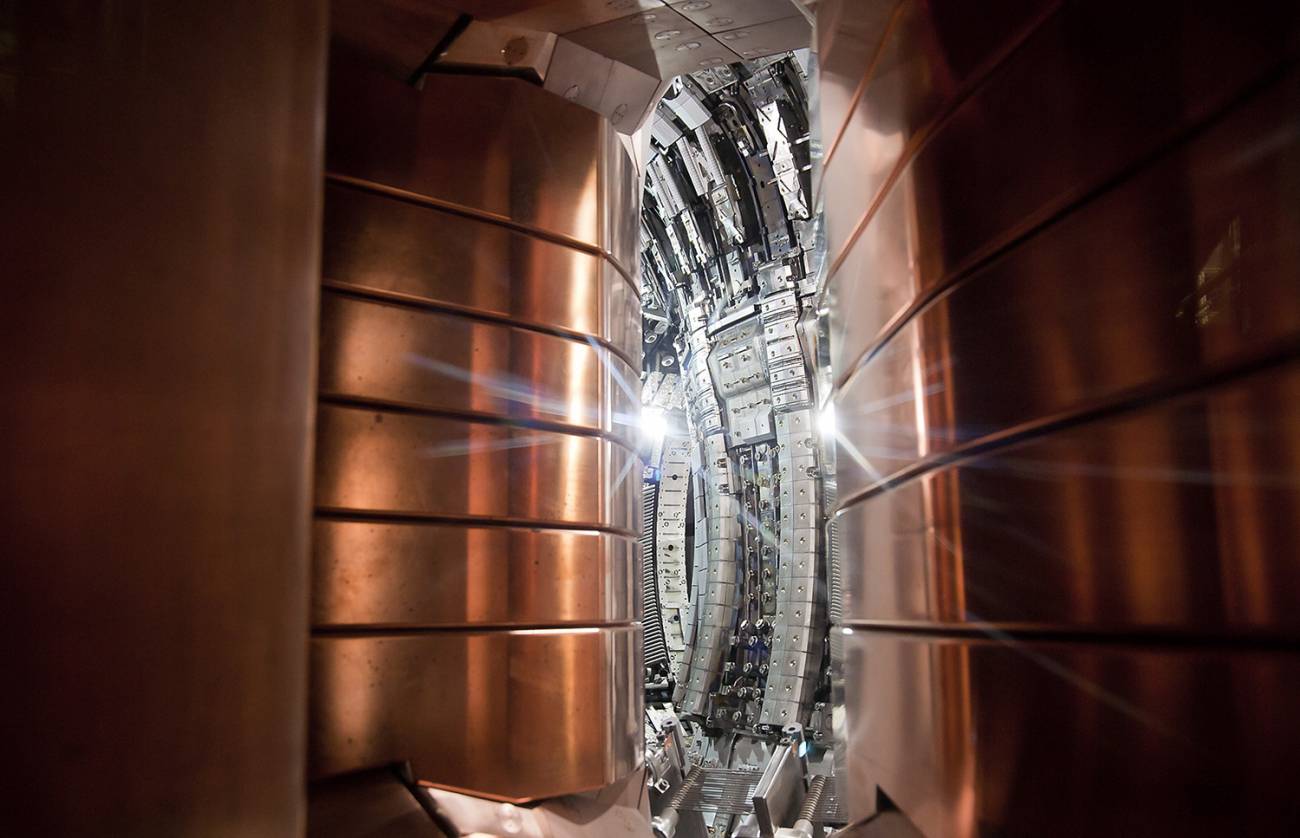A few days ago, it was announced the new record of 59 megajoules (MJ) of energy achieved for five seconds from fusion reactions in the JET (Joint European Torus) experimental device, a large European facility located in the United Kingdom.
Humanity faces a formidable challenge in the coming decades: the energy transition. Human progress is and will be linked to the development of energy sources other than those currently in use.
Today, most of the energy consumed in the world comes from fossil fuels, and this has hardly changed in the last fifty years. However, in the future we will have to produce much more energy than we do today, two to three times more, using very different methods. Not only because of the problem associated with CO2 emissions and their consequences for climate change, but also because of the depletion of natural resources. The challenge is formidable.
Nuclear energy, especially from the fusion reactions of light atoms, is one of the alternatives for energy production in the future
The available alternatives are not many: essentially, energy from photovoltaic and wind sources. However, both have intrinsic characteristics (especially variability and low energy density) that make them very difficult to manage. This makes it necessary to have other options available.
The only relevant one is nuclear energy, especially from fusion reactions of light atoms.
The energy of the Sun
In this case, the energy comes from nuclear reactions when two light atoms (e.g. deuterium and tritium) fuse, giving rise to a heavier atom (a helium atom and a neutron) and an excess of energy. These types of reactions are at the origin of the Sun's energy.
The development of an energy source from these fusion reactions has been considered a strategic objective by most developed countries over the last decades. In the European case, it has been the subject of coordinated activity for the last fifty years.
The development of an energy source from these fusion reactions has been considered a strategic objective by most of the developed countries
At the European level, almost all the efforts of the scientific community have been focused on developing so-called magnetic confinement fusion. In this, the atoms to be fused are kept confined in a small volume and at high temperature by using magnetic fields.
In general, the development of fusion as an energy source has been based on the construction of devices of increasing size in which the behavior of the confined particles has been studied. The largest operating device in Europe is JET.
Demonstration for ITER
ITER is currently under construction in southern France, in a major international collaboration. ITER will allow, if all goes well, to demonstrate that fusion reactions are possible continuously for 'long' periods of time (hundreds of seconds) with a net energy gain.
The relevance of the news with which we started this article does not only lie in having achieved a new record of energy production from fusion reactions. Its importance lies in the fact that, in addition, it has been produced using technological solutions that are being implemented in ITER.
The new record of energy production from fusion reactions achieved at JET is also important because it has used technological solutions that are being implemented at ITER.
The most relevant is the use of "first wall" materials (the material that is in contact with the particles confined by the magnetic field) equal to those that will be used in ITER (tungsten and beryllium).
In most of the devices currently in operation in the world, carbon walls are used (initially also in JET), but results obtained some years ago made advisable the use of other materials such as tungsten, although this makes the control of the confined particles more complicated.
The most relevant is the use of "first wall" materials equal to those to be used in ITER (wolfram and beryllium)
The result obtained a few days ago, therefore, confirms some of the technological alternatives selected for ITER.
International effort with Spanish support
The results obtained are the result of the joint work of a large number of researchers from all over Europe. Among them, and prominently, a significant number of Spanish researchers (mainly from CIEMAT, a Spanish research center with an important participation in the European Fusion Program). The development of fusion as an energy source is a long-standing example of large-scale international collaboration.
The milestone achieved does not mean that energy production from fusion reactions is a solved problem. Many technological challenges remain that will still require joint European efforts for decades to come.
Many technological challenges remain that will still require a joint European effort for decades to come
The first of all is to complete the construction of ITER and get it to operate successfully. This will make it possible to demonstrate, for the first time, a net energy gain by being able to produce a significant number of fusion reactions over long periods of time.
After ITER, it is planned to build one more device, a demonstration reactor (DEMO), capable of producing electricity almost continuously and in which the complete cycle of energy production from fusion reactions can be tested in its entirety.
Another important challenge is the development of materials with which to build future fusion reactors. Spain is particularly committed to this, as it has proposed to build a specific scientific facility (the IFMIF-DONES project) for this purpose in Granada.

